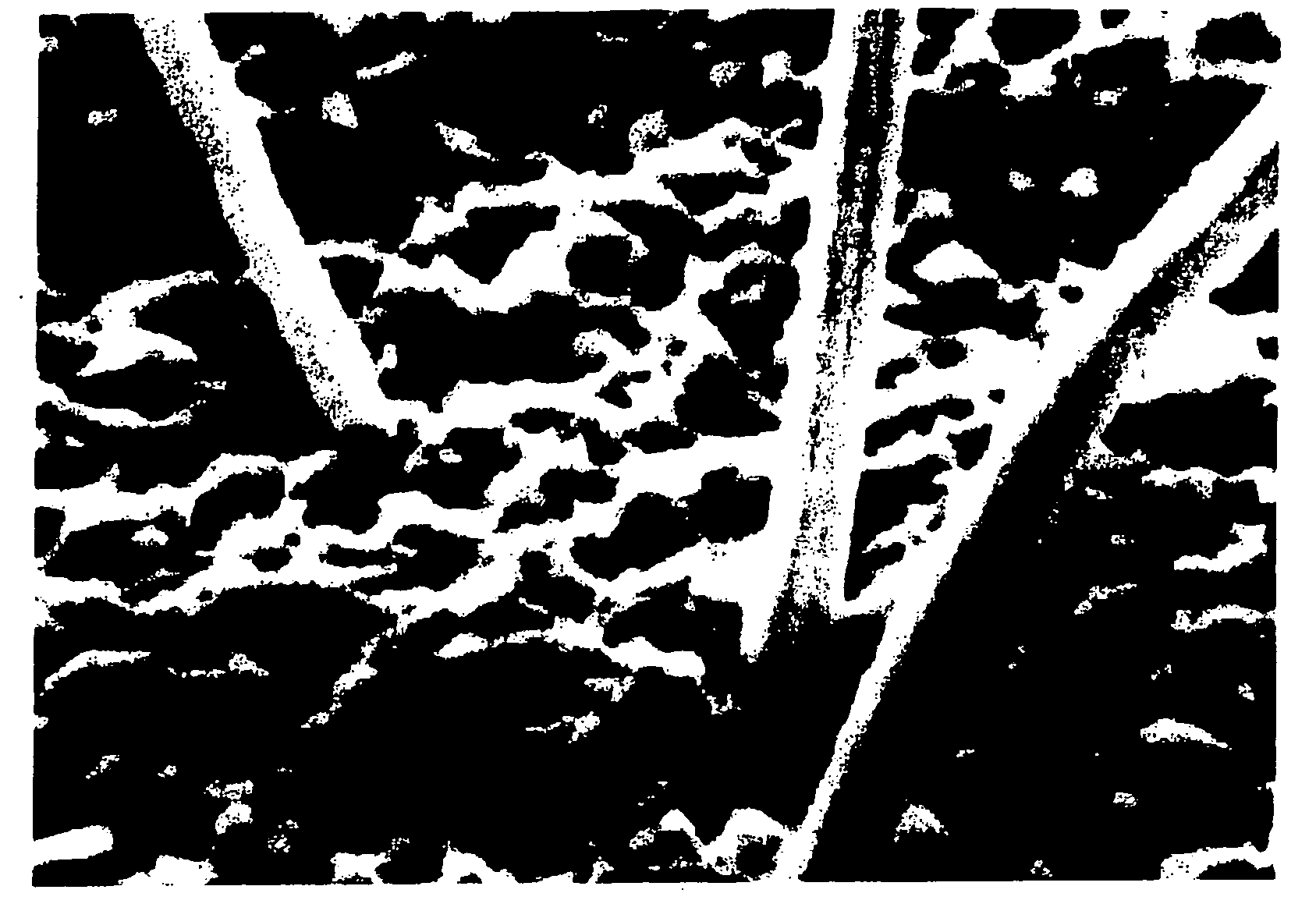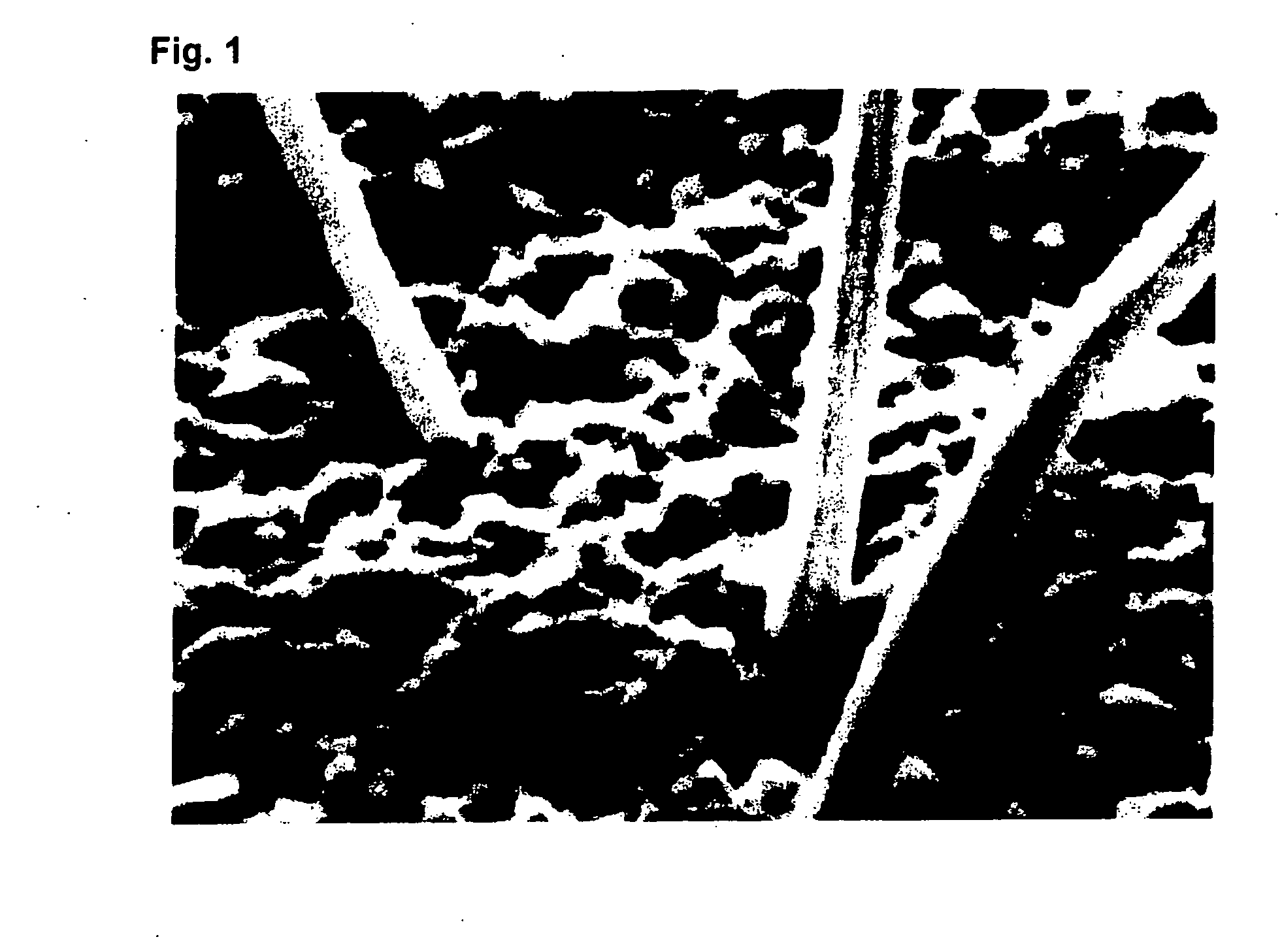Flux for lead-free solder and soldering Method
a soldering and flux technology, applied in the field of flux for soldering, can solve the problems of whisker formation in soldered portions, equipment malfunction, sn—pb solder, etc., and achieve the effects of preventing whisker formation, reducing costs, and increasing costs
- Summary
- Abstract
- Description
- Claims
- Application Information
AI Technical Summary
Benefits of technology
Problems solved by technology
Method used
Image
Examples
examples
[0075]A resin-based flux having a rosin-type resin as a base component was prepared by mixing the components shown in Table 1 in the indicated proportions, and testing was performed with respect to the formation of whiskers after soldering, the wettability of molten solder (zero cross time), and the insulation resistance of flux residue. The results of these tests are also shown in Table 1.
1. Formation of Whiskers
[0076]In order to simulate two-sided mounting of a printed circuit board by reflow soldering followed by flow soldering, a printed circuit board for testing for the formation of whiskers (a commercial product measuring 180×180 mm and having Cu lands) was first heated in a reflow furnace without mounting of parts thereon. The heating conditions were preheating at 160° C. for 1 minute and then main heating at 200° C. or above for 20 seconds (peak temperature of 240° C. for 5 seconds), which are typical temperatures for reflow soldering with lead-free solder.
[0077]Using an aut...
PUM
| Property | Measurement | Unit |
|---|---|---|
| temperature | aaaaa | aaaaa |
| melting point | aaaaa | aaaaa |
| melting point | aaaaa | aaaaa |
Abstract
Description
Claims
Application Information
 Login to View More
Login to View More - R&D
- Intellectual Property
- Life Sciences
- Materials
- Tech Scout
- Unparalleled Data Quality
- Higher Quality Content
- 60% Fewer Hallucinations
Browse by: Latest US Patents, China's latest patents, Technical Efficacy Thesaurus, Application Domain, Technology Topic, Popular Technical Reports.
© 2025 PatSnap. All rights reserved.Legal|Privacy policy|Modern Slavery Act Transparency Statement|Sitemap|About US| Contact US: help@patsnap.com


